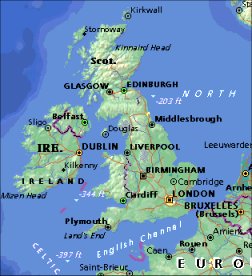
Why the war of roses?
The design of this board game was stimulated by certain actual historic happenings in Britain in the 15th century AD.
According to Microsoft Encarta, the happenings were a "... series of dynastic civil wars in England fought by the rival houses of Lancaster and York between 1455 and 1485. The struggle was so named because the badge of the house of Lancaster was a red rose and that of the house of York a white rose."
Opponents were the Lancastrian king of England Henry VI, aided by his queen Margaret of Anjou, and Richard Plantagenet, 3rd duke of York. Because of the insanity of the king and military losses in France during the last phase of the Hundred Years' War, York asserted his claim to the throne in 1460, defeated the Lancastrian armies at St. Albans in 1455 and at Northampton in 1460. In the latter year, York was defeated and killed at Wakefield. In 1461 his son was proclaimed king as Edward IV and defeated Henry and Margaret, who fled from England. In 1465 Henry was captured and imprisoned in the Tower of London. The war was revived because of division within the Yorkist faction. Richard Neville, earl of Warwick, aided by George Plantagenet, duke of Clarence, younger brother of Edward, made an alliance with Margaret and led an invasion from France in 1470. Edward was driven into exile and Henry restored to the throne. In 1471, however, Edward returned and, aided by Clarence, defeated and killed Warwick at the Battle of Barnet. Shortly thereafter, the Lancastrians were totally defeated at the Battle of Tewkesbury, and Henry was murdered in the Tower.

After the death of Edward in 1483, his brother Richard usurped the throne, becoming king as Richard III, and the Lancastrians turned for leadership to Henry Tudor, earl of Richmond, who later became King Henry VII, founder of the Tudor dynasty. In 1485 the forces of Richard and Henry fought the decisive Battle of Bosworth Field, the last major encounter of the war. After Richard's death in battle, Henry ascended the throne and married Edward's daughter, thus uniting the houses.
Two copies of this game were donated to the Museum. A copy of the original game (see graphic at top of this page) created by Andrew McNeil and first produced in Britain by PhilMar Ltd. in 1974 amd was donated in 1980. The second copy produced by Avalon Hill Game Co. in the United States in 1976, was donated to the Museum in 1989. This version is somewhat smaller than the original game produced in Britain.
In the British version, the box container is 31.4cm long x 50.1cm wide x 3.6cm high. The board or map of Britain in the15th century folds in half, and when opened is 61.2cm long x 48.8cm wide. Within the box is plastic platform which holds a number of playing pieces. There are 8 sets of 15 counters (1.3cm square), each with a white background and black line drawings of heraldic badges: crescent, sun, portcullis, staff, knot, boar's head, oak branch, and blank. In addition, there are 72 "crown cards" each with a historic figure's name and number. There are also 7 royal pieces with a red or white rose and a royal name. There are 8 ship pieces each with the ship's name and port name.
The game is for 2 to 8 players. Each player represents a noble family of the period who attempts to place his choice for king on the throne by eliminating rivals. Play of the game has elements from chess, checkers (draughts), and Go. A set of instructions in the English language with some background history is included.
Last update March 24, 2010